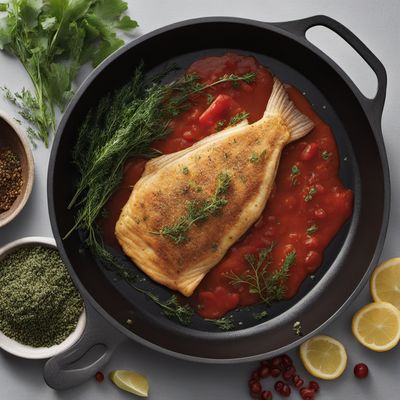
Ingredient
Flounders
The Versatile Flounder: A Delicate and Flavorful Catch
Flounders are flatfish with a distinctive diamond-shaped body and both eyes on one side. They have a delicate, mild flavor with a slightly sweet undertone. The flesh is tender and flaky, making it perfect for grilling, baking, or pan-frying. The skin is thin and edible, adding a subtle crispness when cooked. Flounders are often used in dishes like fish and chips, seafood stews, or simply served with a squeeze of lemon.
Origins and history
Flounders are found in both saltwater and freshwater environments around the world. They are commonly found in the coastal regions of North America, Europe, and Asia. Flounders have been a part of human diets for centuries, with historical records dating back to ancient Roman and Greek civilizations. They were highly valued for their abundance and ease of catching, making them an important food source for coastal communities.
Nutritional information
Flounders are a good source of lean protein and essential nutrients such as omega-3 fatty acids, vitamin D, and selenium. They are low in calories and fat, making them a healthy choice for seafood lovers. A 3-ounce serving of flounder provides approximately 90 calories, 1 gram of fat, and 20 grams of protein.
Allergens
Flounders may contain allergens such as fish proteins, which can trigger allergic reactions in individuals with fish allergies. It is important to exercise caution and consult with a healthcare professional if you have known allergies or sensitivities to fish.
How to select
When selecting flounders, look for fish with clear, bright eyes, shiny skin, and a fresh, mild aroma. The flesh should be firm to the touch and free from any sliminess or discoloration. If purchasing fillets, ensure they are moist and have no signs of drying or browning. Fresh flounders should be displayed on ice to maintain their freshness.
Storage recommendations
To maintain the freshness of flounders, store them in the refrigerator at a temperature between 32°F and 38°F (0°C and 3°C). Keep the fish wrapped in moisture-proof paper or plastic wrap to prevent drying. It is best to consume flounders within 1-2 days of purchase for optimal flavor and quality.
How to produce
Flounders are primarily caught in the wild, but they can also be farmed in controlled environments. If you have access to a suitable body of water, you can consider setting up a small-scale aquaculture system to raise flounders. Consult with local authorities and experts to ensure compliance with regulations and best practices.
Preparation tips
Flounders can be prepared in various ways, including grilling, baking, pan-frying, or steaming. For grilling or baking, season the fish with salt, pepper, and your choice of herbs or spices. Cook until the flesh is opaque and flakes easily with a fork. Pan-frying flounders is a popular method, where you can lightly coat the fillets in flour or breadcrumbs for a crispy exterior. Serve flounders with a squeeze of lemon or tartar sauce for a refreshing flavor. They also work well in seafood stews or as a filling for fish tacos or sandwiches.
Culinary uses
Flounders are commonly used in dishes such as fish and chips, seafood stews, fish tacos, and pan-fried fillets. They are versatile enough to be paired with various flavors and ingredients, making them a favorite in many cuisines around the world.
Availability
Flounders are commonly available in coastal regions and areas with access to freshwater bodies. They can be found in North America, Europe, and Asia, particularly in countries like the United States, Italy, Spain, France, and Japan.

